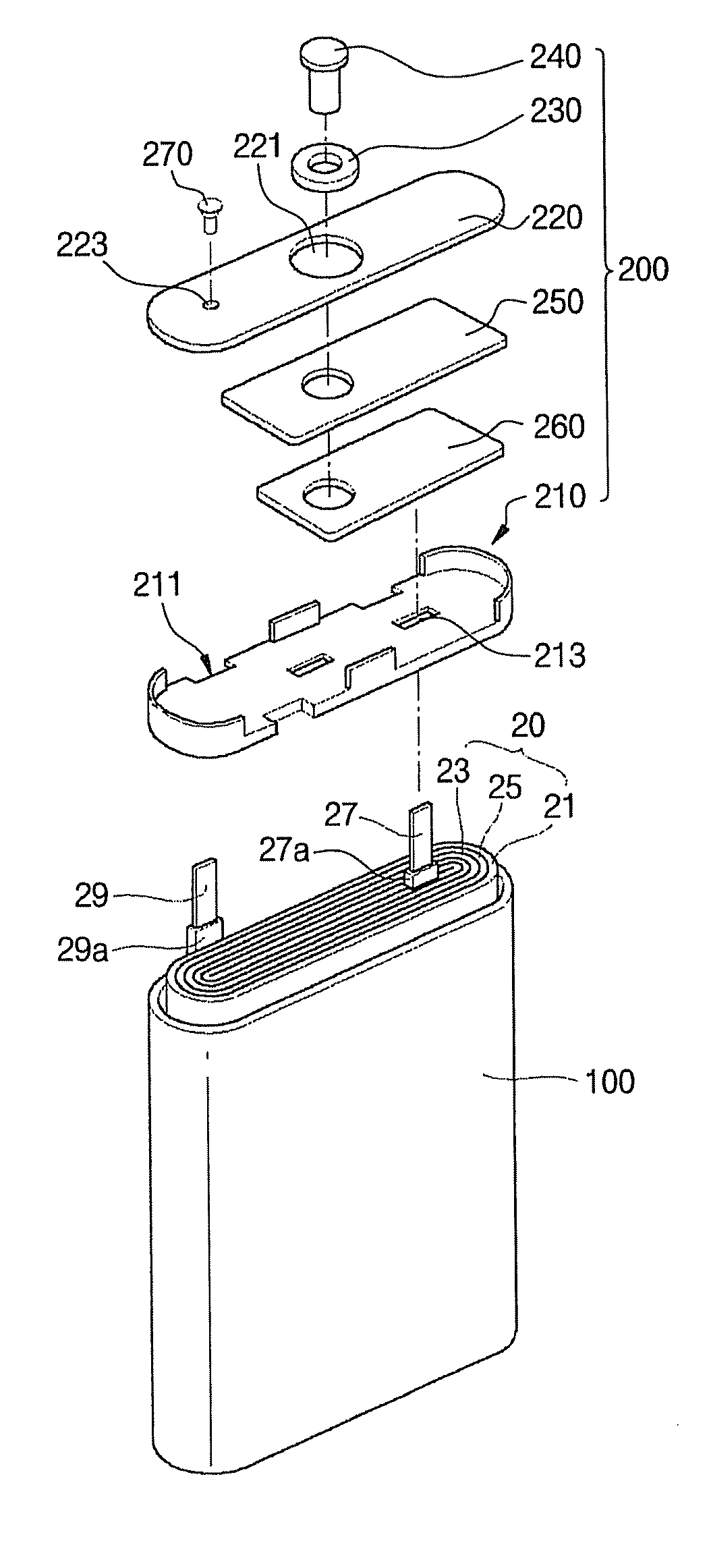Electrode assembly and secondary battery having the same
a secondary battery and electrode assembly technology, applied in the manufacture of cell components, final product details, cell components, etc., can solve the problems of short circuit of the battery, explosion of the battery, and neither form of carbon is ideal, so as to reduce the capacity, and reduce the thickness of the battery
- Summary
- Abstract
- Description
- Claims
- Application Information
AI Technical Summary
Benefits of technology
Problems solved by technology
Method used
Image
Examples
example 1
[0065]A positive electrode active material of LiCoO2, a binder of polyvinylidene fluoride (PVDF) and a conductive material of carbon were mixed in a weight ratio of 96:2:2, and then the mixture was dispersed in N-methyl-2-pyrollidone to form a positive electrode active material slurry. The slurry was coated on a 12 μm-thick aluminum foil, and dried and rolled to form a positive electrode. A complex of silicon and graphite was used as a negative electrode active material. The negative electrode active material, a binder of styrene-butadiene rubber and a thickener of carboxymethyl cellulose were mixed in a weight ratio of 97:2:1 and then the mixture was dispersed in water to form a negative electrode active material slurry. The slurry was coated on a 15 μm-thick copper foil, which is a negative electrode collector, and dried, followed by forming the negative electrode active material layer on the negative electrode collector to form a negative electrode.
[0066]Here, the thickness of th...
example 2
[0067]A lithium secondary battery was prepared as described in Example 1, except that rolled copper foil having a tensile stress of 970.0 Mpa was used as the negative electrode collector.
example 3
[0068]A lithium secondary battery was prepared as described in Example 1, except that rolled copper foil having a tensile stress of 970.0 Mpa was used as a negative electrode collector, and the thickness of the negative electrode collector was 17.6% of that of the negative electrode active material layer.
PUM
| Property | Measurement | Unit |
|---|---|---|
| tensile stress | aaaaa | aaaaa |
| thickness | aaaaa | aaaaa |
| thickness | aaaaa | aaaaa |
Abstract
Description
Claims
Application Information
 Login to View More
Login to View More - R&D
- Intellectual Property
- Life Sciences
- Materials
- Tech Scout
- Unparalleled Data Quality
- Higher Quality Content
- 60% Fewer Hallucinations
Browse by: Latest US Patents, China's latest patents, Technical Efficacy Thesaurus, Application Domain, Technology Topic, Popular Technical Reports.
© 2025 PatSnap. All rights reserved.Legal|Privacy policy|Modern Slavery Act Transparency Statement|Sitemap|About US| Contact US: help@patsnap.com



